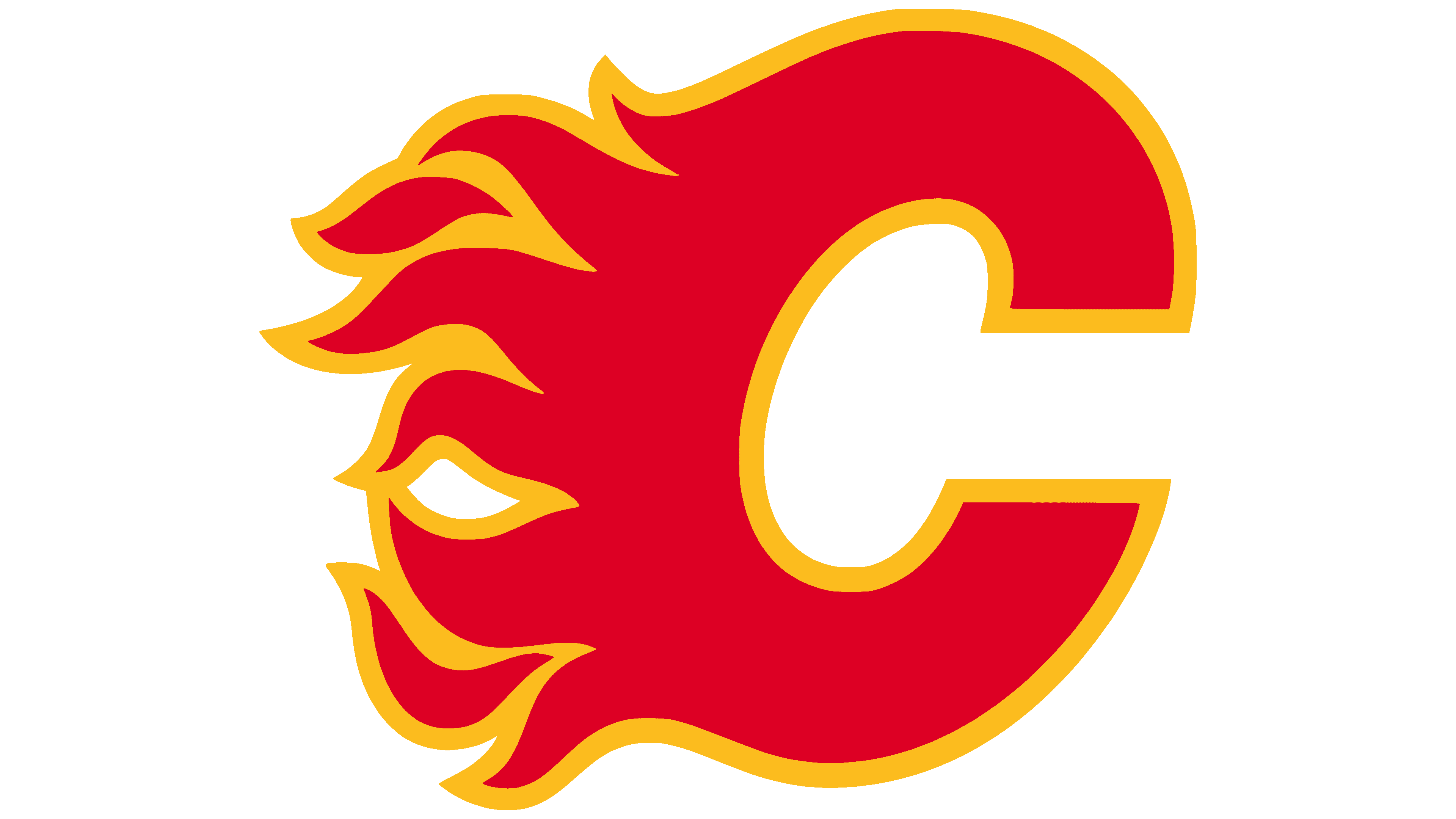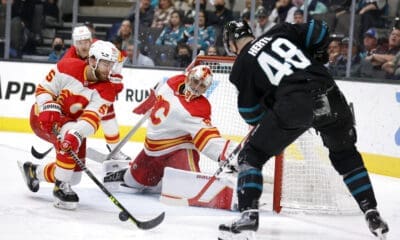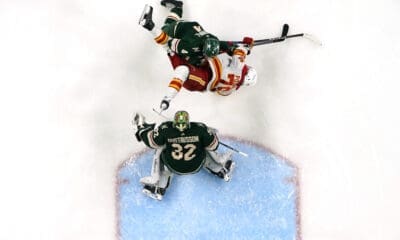Calgary Flames
Avalanche vs Flames – The Playoff Chinook Continues (Stats Recap)
Two poor possession teams go in the ring, one is named a victor, and the other is sad. The Flames played some slightly improved hockey last night. They also improved their potential playoff hopes.

The immeasurable joy I get when I see Jarome Iginla play hockey is increased ten-fold when the Flames continue their confusing but enjoyable ride towards the post-season. It’s a really weird but good time (I think) to be a Flames fan.
The most important thing coming from last night’s victory: The fourth line was a capable possession line. It wasn’t just Matt Stajan and Mason Raymond. You can consider Brandon Bollig integral to last night’s fourth line success. We’ll address that further down though, So Bollig has now been promoted from human disaster to human open-wound.
Congrats Brandon, I know we here at Matchsticks as well as the fans have been hard on you but you did it!
Period Summary via Natural Stat Trick
- Really for the most part, besides the sloppy play in the first and the Avalanche PP it just about sums up and explains the first period. Flat-footed, confused at times, allowing zone entries along with a PP will do that.
- As you’ll see a bit further down, Calgary had a pretty solid second period for the most part. Well besides the first shift of the period. Beyond that, trying to get shots ON Varlamov as opposed to being blocked was key.
- Score effects driven third coupled with some 6v5 play late in the period as the Avs tried to claw back impacted zone time and consistent play.
Due to the limited penalties called in favour and what seemed like an abundance of calls against…the penalty kill was the most important last night. In terms of shot suppression, it wasn't bad at all. They limited the Avalanche to a total of seven shot attempts over three penalty kills.
The aggressive and nearly sacrificial PK limited former captain Jarome Iginla to two shot attempts with the man advantage while Ryan O’Reilly had one attempt. The Avs’ biggest driver was Tyson Barrie who had four individual attempts and the lone scoring chance against.
Dennis Wideman was the only Flames player to generate a shot attempt on the lone PP they had in the first period. The PP situations are marked off with red dots on either side while single shot attempts on the man advantage are the lone red dots. EX: First period for Colorado’s PP.
- Calgary’s ability to slightly edge out Colorado at ES in the first period is a small victory part of the larger win. Albeit the line juggling that in all honesty made the Flames inconsistent for periods of the first and struggle to find their feet. The obvious adjust of Markus Granlund to the second line over Mikael Backlund was confusing and impacted the performance despite the David Jones goal. Overall their play wasn’t the worst but it was far from perfect.
- All that aside, Calgarys top drivers during the period were Jones (three shot attempts), Josh Jooris (three attempts), and Matt Stajan (two attempts).
- The biggest thing that stands out in the second period is that abnormal spike of shot attempts over 2:27 where they registered eight shot attempts on Colorado. In that span they did get off six actual shots on net which is huge for a team who has issues generating them.
- Colorado definitely found opportunities late in the second period to close the gap. With seven shot attempts in just over two and a half minutes with a variety of shooters; the Avalanche certainly had no intentions of being blown away just yet. Matt Duchene lead the way for them in the period with three.
- Calgary’s biggest generators in the second frame? Dennis Wideman with four, Johnny Gaudreau, Backlund, Jones, and TJ Brodie whom all had two.
- Score effects driven play in the third allowed Colorado’s aggressive game to continue. The team’s ability to consistently enter the zone and find ways to control their offensive zone lead to the initiate interval of control early on. The one thing systems-wise that didn’t work for Colorado was deployment and usage. Late in the period specifically with Barrie electing to shoot rather than passing. Clearly ignoring the LW open for a capable one-timer.
- In the final frame, Calgary relied on Bouma with three attempts, Jooris, Joe Colborne, Bollig, and Sean Monahan all with two attempts to close out the game.
The Flames in a vacuum last night with score effects eliminated and adjusted for play ended up being quite successful. Sustainable play existed in the second period as shown above and despite the Avalanche finding a way to claw back in the third period. More importantly: Calgary was able to push back and regain a bit of the game for themselves. Honestly, after the disruptions to the lines it appears the figured it out to an extent.
A steady rise and volume of scoring chances lead to the Jones goal to open scoring. Colorado despite of all of that did find their legs heading right up to the Alex Tanguay goal. Colorado had a slight edge in scoring chances to end the opening period 5-4. Despite their shot attempt success in the second, and seven scoring chances; Colorado managed 11 individual scoring chances.
In the third period, Calgary did find more chances than Colorado as they out-chanced the Avs 8-5 to end the game. A lot of the Colorado chances did exist on those offensive zone breakdowns that lead to two-on-ones and forced the Flames into backchecking.
We see two different stories for the most part here. Let's start with the Avalanche and how their strengths and weaknesses played out. The biggest part of their game is speed and the ability to transition up ice to generate shots or by working and cycling the play. The latter worked in their favour early on and continued to be effective at times.
The shot placement in the FO circle to the left (RW side) gave the Avs more than enough shots. They also worked in the low and mid slots appropriately to find shooting lanes. The Flames' standard for blocking mid and high slot shots is visible yet again. Check out Les' shot blocking article he posted today as it goes in depth into the impact of shot blocking.
For Calgary, they managed to get shot attempts off from virtually everywhere on the ice. That said the biggest issue with that is the number of quality shots they missed out on by shooting from so far out. Example: Brandon Bollig taking a shot last night well out of a quality area. The Flames managed to find opportune success in the low slot close to Varlamov which resulted in all of their goals. Point shots seemed to yield a bit better results than usual.
The only really detractor from last night besides the quality shot issue was the gap on the RW again. It's problematic and it forces the team to rely on existing shot placement patterns that teams have figured out.
- David Schlemko didn’t get a lot of ice time and whatever ice time he had was with Raphael Diaz. The pair together in their limited play ended up being quite successful. Schlemko had one individual scoring chance and two individual CF events overall.
- Mason Raymond slotting down the roster to the fourth line made the line much more threatening than expected. Is Mason Raymond being misused? Sorta. Did it work? Yes. His ability to work with Matt Stajan and Bollig ended up causing three scoring chances.
- Funny how Mikael Backlund is moved to a different line and the impact across it is positive. Though he didn’t register a single scoring chance, he was responsible for four individual CF events. His linemates benefited from his play too. Colborne without Backlund: 60% CF and 50% FF. In a limited sample away from Backlund, rookie Josh Jooris was 75% CF / 66.67% FF though he was only away from Backlund for 1:43 roughly.
- Speaking of the resurgence in Jooris’ game, he lead the way for the Flames with six iCF events and three iSC events. Not being used at centre opens up his ability to move around the ice and drive to the net. Long-term having him as a capable C/W might be the best for his game.
- Matt Stajan is not being used to the maximum of his abilities so the next best thing is putting him on the fourth line with a capable teammate and Bollig. He exclusively played with Bollig at all times and they were 66.67% CF / 71.43% FF together. With Raymond, Stajan was 88.89% CF and 83.33% FF. If the line can continue to be useful, smart with positioning, and skate like they did last night then we’re in for a treat.
- Because of their play and credit to his Brandon Bollig was decent. He broke even possession wise but he had three iCF and two scoring chances. Just like in Chicago, linemates make the difference. Stajan is no Marcus Kruger but he’s capable and able to improve Bollig.
- Dennis Wideman at ES last night produced five iCF and was capable in the offensive zone. The biggest knock on him still continues to be his defensive game. Herein lies the biggest conundrum: do you over utilize a defenseman who can produce at 5v5 and the PP for the sake of points WHILE taking a hit defensively? The hope is that someone can cover for his mistakes. Against the top six and top pairings of Colorado, he wasn’t really close to 50% in any category. Even with the players away from Wideman, they all tended to be more positive. He did succeed against the bottom six of the Avs however.
- The same can be sad about Kris Russell. Success against bottom pairings and limited samples; struggled against top competition. No one was inherently shutdown either as the Avs still found ways to get close to the net and generate chances.
- The top line of Jiri Hudler and his two sons Sean Monahan and Johnny Gaudreau were the byproduct of matching top competition versus top competition. The results ended up being in favor of the Avs by a considerable margin. Hudler struggled against the likes of Iginla, Barrie, Duchene, and Mitchell (38.10% CF / sub-30% FF) but excelled against softer comp and TOI against. The same virtually exists across Monahan and Gaudreau.
- Hartley’s reluctance at times to match lines according and believing that he can put Monahan virtually any situation AND succeed might be something of discussion later. Last night, Backlund and Stajan’s lines found far greater success in their match-ups.
- Finally, the “second” or “third” or whatever line it is. Markus Granlund has great potential but he is suffering from the same deployment, usage, and competition issues he had all season. Because of it and his line did have some struggles. Bouma especially. That said, Bouma and Jones did have the harder starts.
Player Spotlight – Matt Stajan aka Matty Franchise
Matt Stajan’s usage is a continued topic of contention for many fans and writers here. For some reason people assume he isn’t cut out to be a top nine centre (he’s ideally a third line centre). Some believe he should be traded as he provides nothing to the team. What he does provide beyond stability, experience, and secondary scoring (when provided linemates and accurate TOI). He also is improving players who aren’t as skilled around him.
Ex: Brandon Bollig.
Together this season the two have played 255:33 together at ES. In that time together, they are a 47.9% CF duo. On a team who has shot attempt issues (both for and against), this is a positive. Last night was similar though it was hard to measure their way away from each other since they are now joined at the hip.
Nearly all of the potential impacts that can be made are beneficial:
He does this regularly for Bollig. For as long as Stajan can make Bollig semi-capable, he deserves to solely stick around for that. Or you know…get rid of Bollig.
by Mike Pfeil









